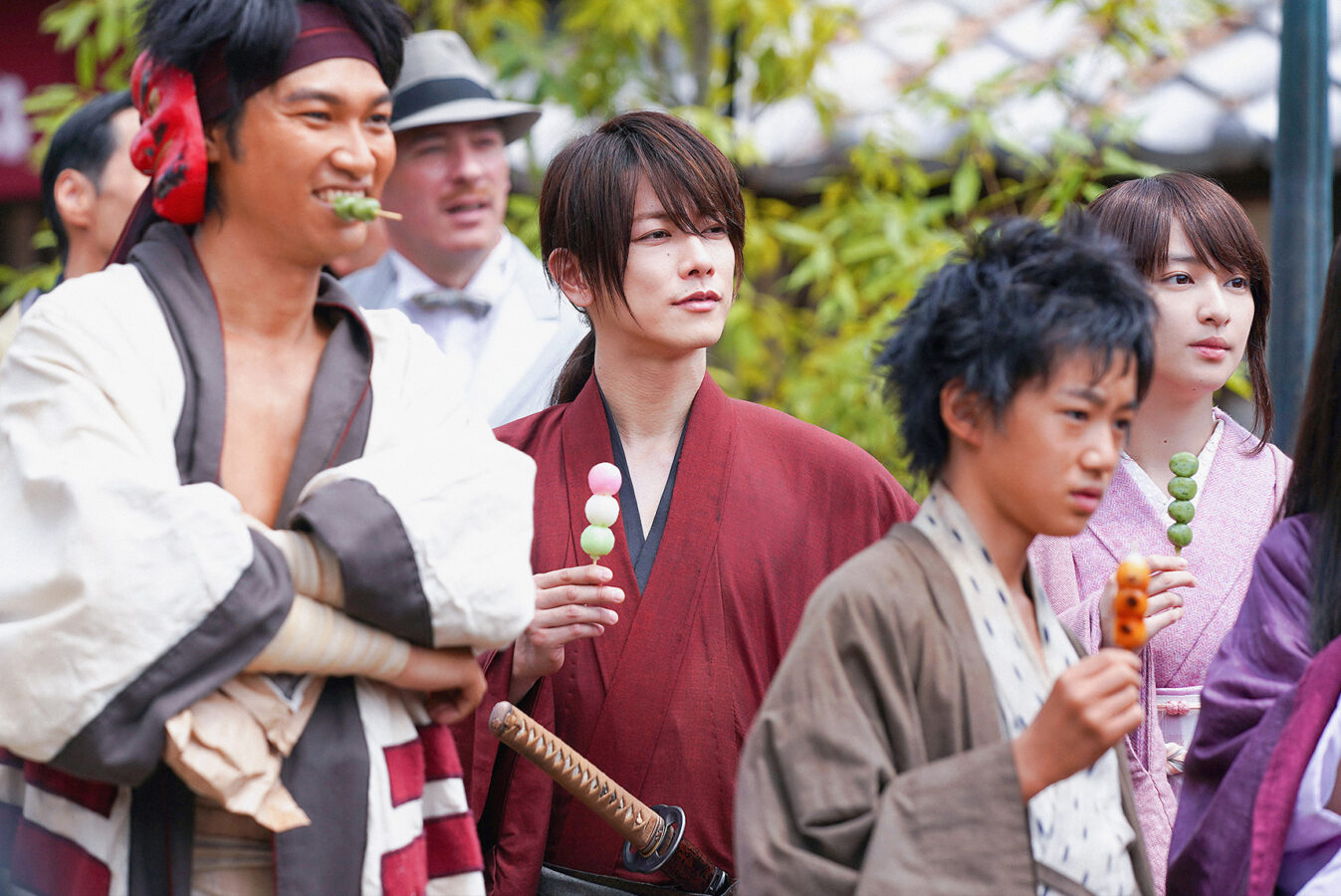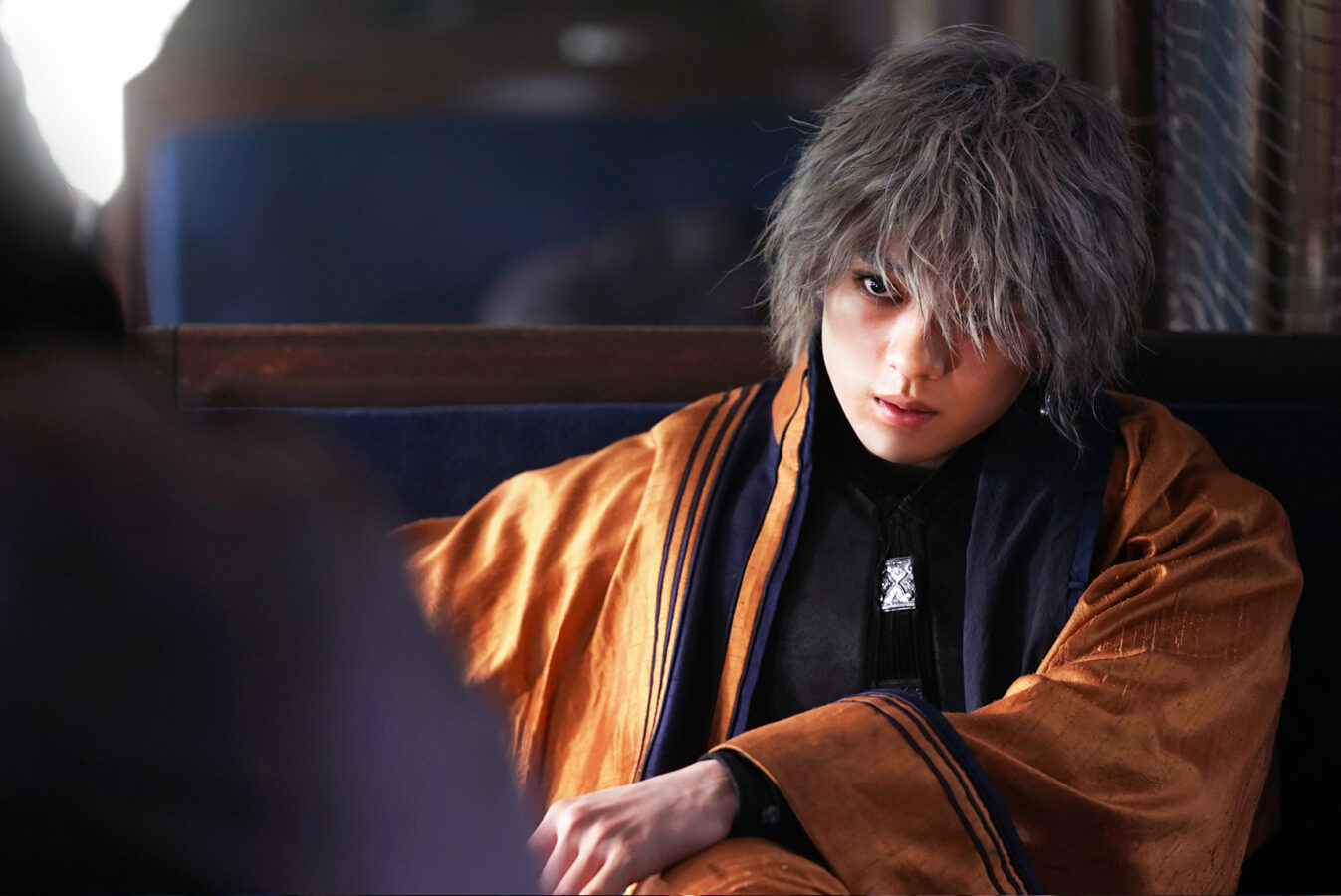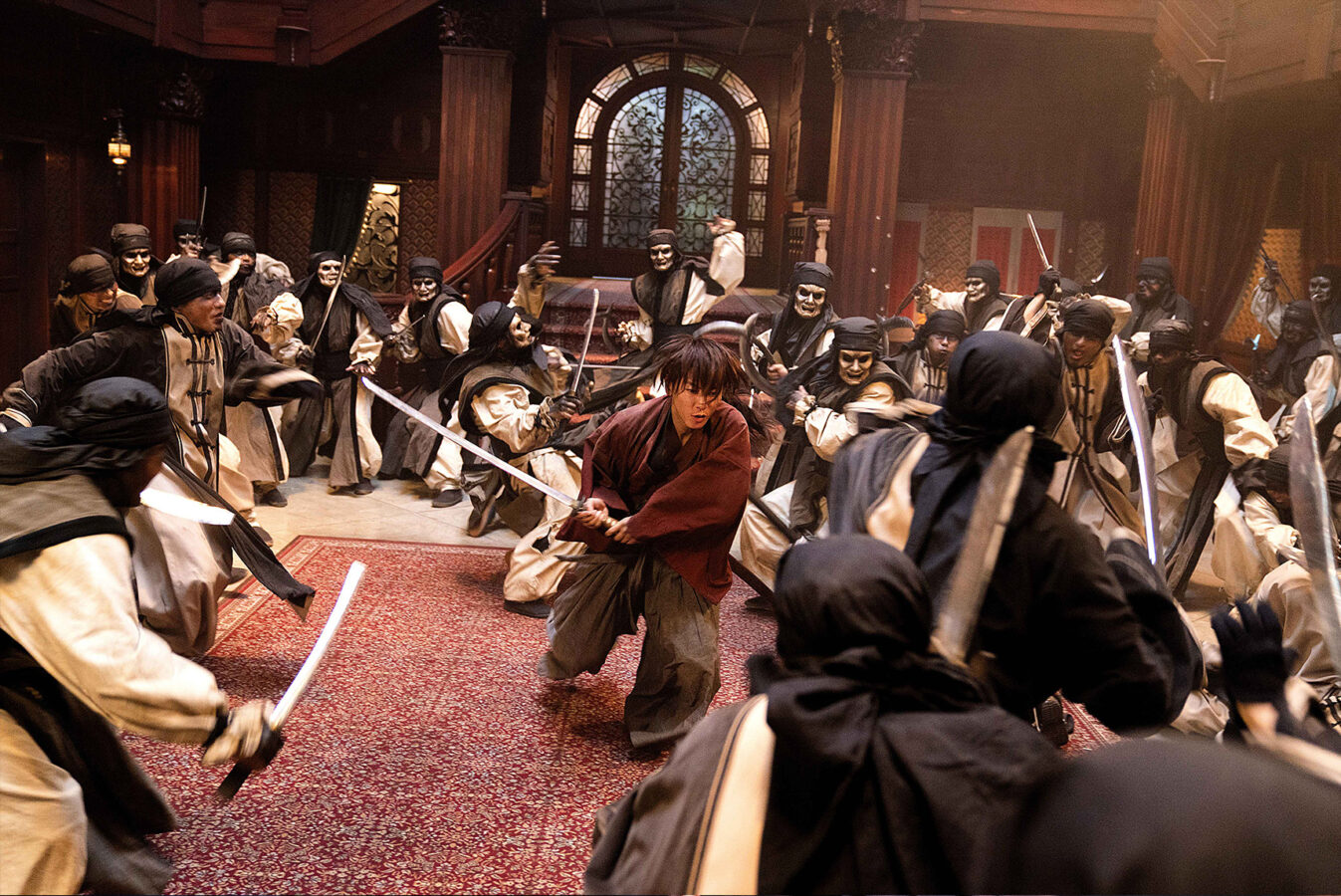[Editor’s Note: Analysis of this franchise should also note that the original Rurouni Kenshin manga this series is based on was created by Nobuhiro Watsuki. Details of criminal charges against him can be found in detail here. Neither Watsuki’s himself, nor his deplorable actions, have any kind of connection to the themes, writing, or production of films written and directed by Keishi Otomo, though he may see monetary residual reward from their success. We encourage anyone who admires these characters and the filmmakers behind them to look into donating to International Center for Missing and Exploited Children and organizations like it to help end human trafficking that results in inhuman material like those found in Watsuki’s possession. Please visit icmec.org to educate yourself and others, and extend the reach of this cause.]
Writer-director Keishi Otomo returns to the world of Rurouni Kenshin in The Final which focuses on the brink of a transforming society in the first part of this finale. Otomo tightens the scope and tells a much more personal story based on the 90’s Jinchū (Judgement) arc, which was never previously adapted into another format until now.
Following a trilogy about his introspective quest to redefine himself, Kenshin has achieved a full arc entering The Final. However, despite his victory in enacting change, he is now faced with the demons of his past coming back to haunt him in the form of Enishi as his former lover’s sibling. Takeru Satoh (Kamen Rider Den-O) sells an understated performance as the stoic Himura Kenshin when threatened with the destruction of everything he lives for, and burning with regret for his mistakes. Arata Mackenyu (Jojo’s Bizarre Adventure: Diamond Is Unbreakable, Pacific Rim: Uprising) brings an effective arrogance to the youthful antagonist broiling with rage and a sense of injustice, allowing for emotional weight to flow through every frame of sword fighting and stunts in the film, only bolstering their effectiveness apparent through the entire series to this point.

Japan’s film industry is popping off in the modern age of global blockbusters. With features like Demon Slayer doing incredible numbers across the world in 2020, eyes are on Japan where, even despite a global pandemic, the theatrical experience is increasingly more popular in the country. This growth can be linked back to the explosive success of the trilogy of live-action adaptations of Rurouni Kenshin and its sequels in the years since. In 2014 the series’ wildly popular Kyoto Arc was split into two parts. American millennials may recall seeing the dub on Cartoon Network’s Saturday Toonami block nearly 20 years ago and got to see the films distributed in the United States by Funimation in 2016 due to a clamoring fanbase in the west for proper localization.
The success of these films has not been carried by franchise namesake alone, as manga adaptations have been as hard to pull off in live-action as they were for western comic book adaptations throughout the 1990s. The trilogy thrives on the rich characters in the series, and the world-building steeped in history. Japan is in a state of post-war transition from samurai Shogunate to the westernized Meiji government, and the heart of the lead character, Himura Kenshin is the crux of this change. Formerly known as Battōsai the Manslayer, Kenshin was once a deadly assassin and now an altruistic believer. He fights in the name of peace after turning over a new leaf and the literal blade of his sword in the iconic reverse-blade, symbolizing his vow to never kill a person ever again in his life.
Where Kenshin and Shishio clashed for the soul of Japan before, The Final introduces Enishi Yukishiro as the film’s main antagonist. With his backstory intrinsically tied to a key turning point in Kenshin’s past, he seeks vengeance for the death of his beloved sister. Enishi uses a fledgling cast of villains bitter about the end of the shogunate to his advantage, all of whom are fashioned with costumes and weapons as demonstrative as any cast of villains in a Shonen anime, and execute guerilla war tactics to bring casualties into the mix as they seek to execute their vision of justice against Himura Kenshin’s past crimes if the gods and the government will not.

The film’s action scenes are the main draw for audiences, and justifiably so. These crowd-pleasing set pieces choreographed by Kenji Tanigaki (Blade II, Flashpoint) are an evolutionary step for hand-to-hand and sword-based combat in action films, putting them on par with modern classics including The Raid and John Wick franchises. Satoh has insisted on executing all his own stunts as Himura Kenshin from the very beginning and has pushed his body to the limits through rooftop sprints, wall running, and mastering the high-speed style of Hong Kong Wuxia, Japanese style swordsmanship, and parkour action that the iconic ronin is known for. His commitment to the role physically and performatively put the pressure on, resulting in most of the cast doing their own stunts as well, and even newcomers like Mackenyu bound and punch across the scenes through effective, high energy tableaus that can only be equated with some of the best in Hong Kong cinema.
To effectively summarize the action would be to suggest a holistic improvement on Shonen genre combat entirely. This is executed by taking a 10 episode arc of anime fights instead reduced only to their distinct stylized movement and emotional character beats, fast-forwarded into an exhilarating 10-minute battle. Longtime fans may take gripes with missing detail and character highlights, but as is the case with any kind of adaptation of long-form work, the right changes are made to effectively give weight to the film’s most important core themes. Despite this, as a finale to a saga filled with massive themes and larger-than-life characters, every member of the supporting cast is given the resolution necessary to tie their arc to Kenshin’s as he fights for peace in Japan’s future.

This film’s upcoming sequel-prequel being an adaptation of the iconic OVA Trust and Betrayal (1999) is and will be essential to The Final in the future. If that story is adapted the way fans expect, layers of The Final will be further emboldened by performances from Satoh and Mackenyu in retrospect. Both actors give substantially greater weight as The Final sets up the context of their relationship to Tomoe Yukishiro, and the genesis of the crossed scar that defines Kenshin’s characterization from then on.
Arguably, this climactic film necessitates viewing Otomo’s first trilogy for the full context of these characters’ arcs and their world, but The Final and The Beginning are intended to be viewed as their own duology, and viewable as stunning period piece action films in their own respect. When it’s completed, they will undoubtedly paint a stunning circle of storytelling that ripples with the themes of the franchise. The Final in every respect is an evolution for these films. While its structure and scale are closer to Rurouni Kenshin: Origins (2012), its pace is significantly more refined, its action wildly more impressive, and backed by a superior emotional resonance as the necessary puzzle piece to deliver satisfying filmmaking behind the weight of clashing steel blades. When all is said and done, Rurouni Kenshin will be the series of films that helped redefine Japanese cinema, and may one day supersede the manga and anime as the superior edition of one of Japan’s most popular modern fictional heroes.
Ruroni Kenshin: The Final is now streaming on Netflix worldwide.
You can donate to prevent international trafficking of children at www.icmec.org/donate-now/







